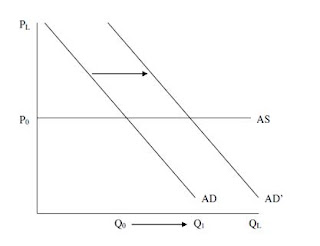 |
| Location of Tourism Australia. |
On Thursday, January 6, we visited the Tourism Australia office in the PriceWaterhouse Cooper Building. According to Tourism Australia’s Corporate Plan, it is the Australian Government agency responsible for the international and domestic marketing of Australia as a travel destination. We listened to Rachel Crowley, General Manager of Corporate Communication speak about the importance and changes within this sector.
Tourism is essential to the Australian economy. It is Australia’s largest service export and directly employs 500,000 people. It contributes $33 billion in Gross Domestic Product and generates $92 billion of spending.
International tourists are important to this industry. According to the 2020 Tourism Industry Potential handout we received, international tourists accounted for 38% of tourism expenditures in 2009. Australia has seen an appreciation of the value of its dollar, which has an effect on tourism. International tourists are less likely to come to Australia because the Australian dollar is most likely more valuable than one’s own currency. This makes travelling to Australia much more expensive for international tourists.
Because of this appreciation of the Australian dollar, more and more Australians are taking a cheap holiday overseas. Tourism Australia aims to encourage them to travel domestically. However, Australia’s competitiveness as a travel destination has not kept up with the rest of the world. Tourists have many choices about how and where they spend their time and money.
A change that has influenced the tourism industry includes the rise of ecotourism. According to the article “Ecotourism in Australia” by Tsung-Wei Lai, ecotourism promotes travel to secluded natural areas with an untouched environment. For example, tourism in the Wet Tropics and the Great Barrier Reef increased substantially in the last decade. This form of tourism is the fastest growing sector in the tourism industry and aims to integrate tourism and conservation in order to preserve tourist locations, making the industry sustainable into the future.
Perhaps Australia’s competitiveness as a travel destination has not kept up with the rest of the world because the general person has a positive but shallow knowledge of Australia. When a person thinks of this country, he or she probably thinks of the Opera House, furry animals (koala or kangaroo), and the Great Barrier Reef. However, there is much more to Australia than these stereotypical “top 3.” According to the Australian Government’s Tourism Industry Facts and Figures from May 2010, the top markets of inbound tourists include the United Kingdom, China, New Zealand, United States, and Japan. These tourists enjoy the stereotypical locations, but Rachel talked about the rise of backpacking throughout Australia. The remoteness and wildness of the Australian Outback is still appealing.
The aggregate demand and aggregate supply diagram illustrates how Australia's stronger dollar is likely to affect its exports (particularly tourism) and thereby its economic growth. The Australian dollar appreciates when tourists' demand for dollars increases (shifting aggregate demand curve to AD'). This leads to both an increase in the equilibrium quantity of Australian dollars (shift from Q0 to Q1)and an increase economic growth.
 | |
| International Currency Market |
The aggregate demand and aggregate supply diagram illustrates how Australia's stronger dollar is likely to affect its exports (particularly tourism) and thereby its economic growth. The Australian dollar appreciates when tourists' demand for dollars increases (shifting aggregate demand curve to AD'). This leads to both an increase in the equilibrium quantity of Australian dollars (shift from Q0 to Q1)and an increase economic growth.
 |
| Afternoon shopping in the Queen Victoria Building. |
 |
| Katrin and I walked across the Sydney Harbor Bridge...twice! And look at what we got to enjoy! |
 |
| Life is good! |
Leah,
ReplyDeleteI am so glad that you are enjoying your time as an Aussie! Take it all in! Have you had a VB (beer) yet? Enjoy each day and remember to look left first! I am trying to save the cold weather for you so you can still have some when you get home! Have Fun!
Kel